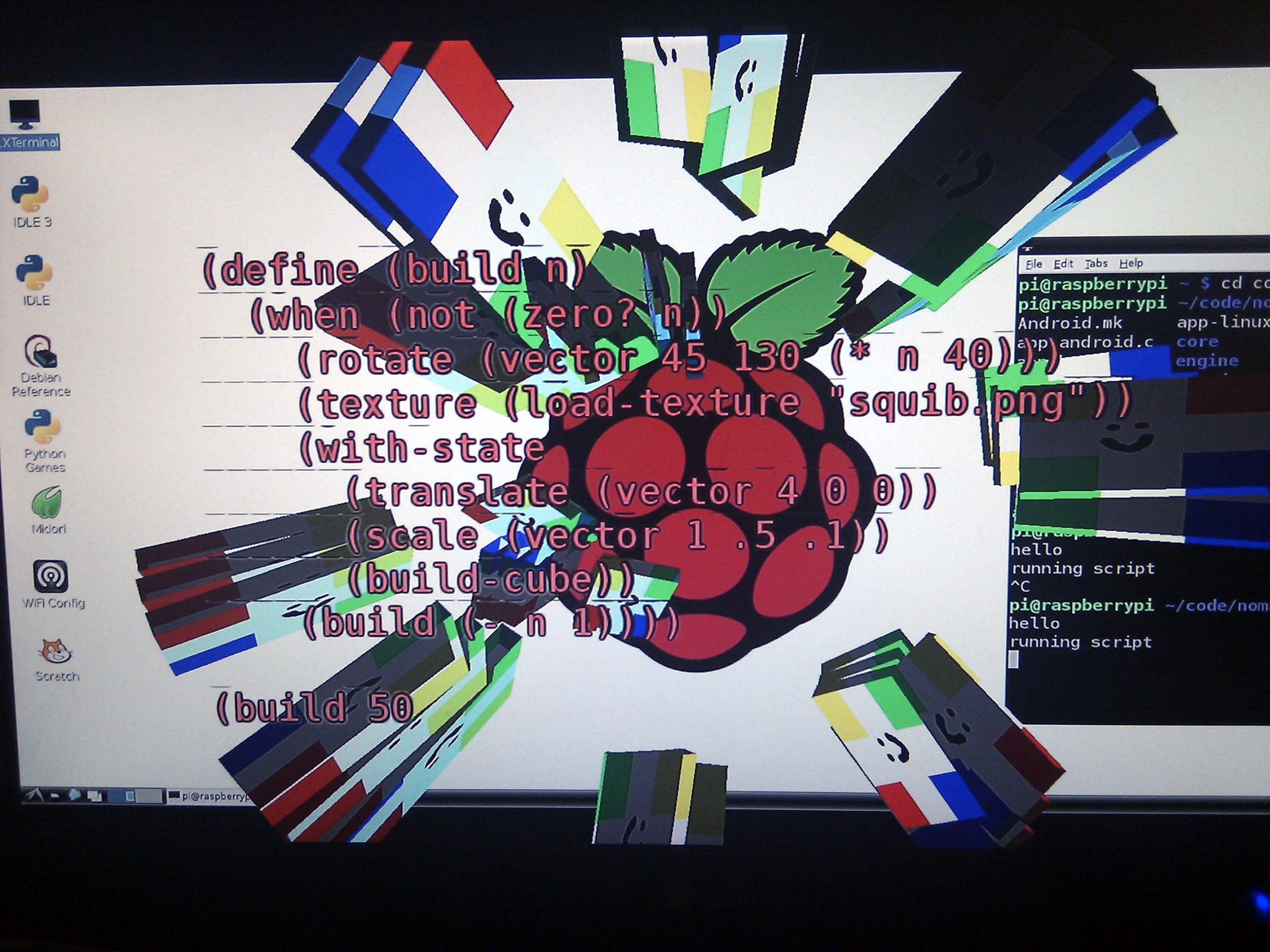Happy new year!
In the UK, 2012 was the year of the Raspberry Pi, a cheap hardware contribution to the aims of the new push to get proper curriculum for computing at school. This has already been a huge success, with community springing up to develop Linux distributions and software both for children and other hobbyist makers.
The Raspberry Pi comes with Scratch, which is perhaps the most popular programming environment designed for children. Scratch allows live coding, as demonstrated by Alex Ruthmann using its built-in MIDI support.
There is now major effort to bring live coding environments designed specifically for live music and visuals though. SuperCollider is working, with Matthew Yee-King managing to live code some C in it during a performance last year. Sam Aaron is working with the Raspberry Pi team in Cambridge, busily porting over Overtone. There are probably parallel efforts for all the other languages, and of course browser-based languages such as Gibber and Livecodelab should work out of the box, too.
While the currently available prototype board has mediocre sound output from the headphone jack, the video output is good, and you might be able to get a digital audio feed from the HDMI port too, via a modern telly. Dave Griffiths has got the Raspberry Pi working on Fluxus, and is exploring some of the interesting weirdnesses of the Pi’s GPU.
Where this really gets interesting is when we start working with children and pedagogues to work this stuff into workshops and indeed the national curriculum. Feel free to share your progress with live coding the Pi in the comments.


